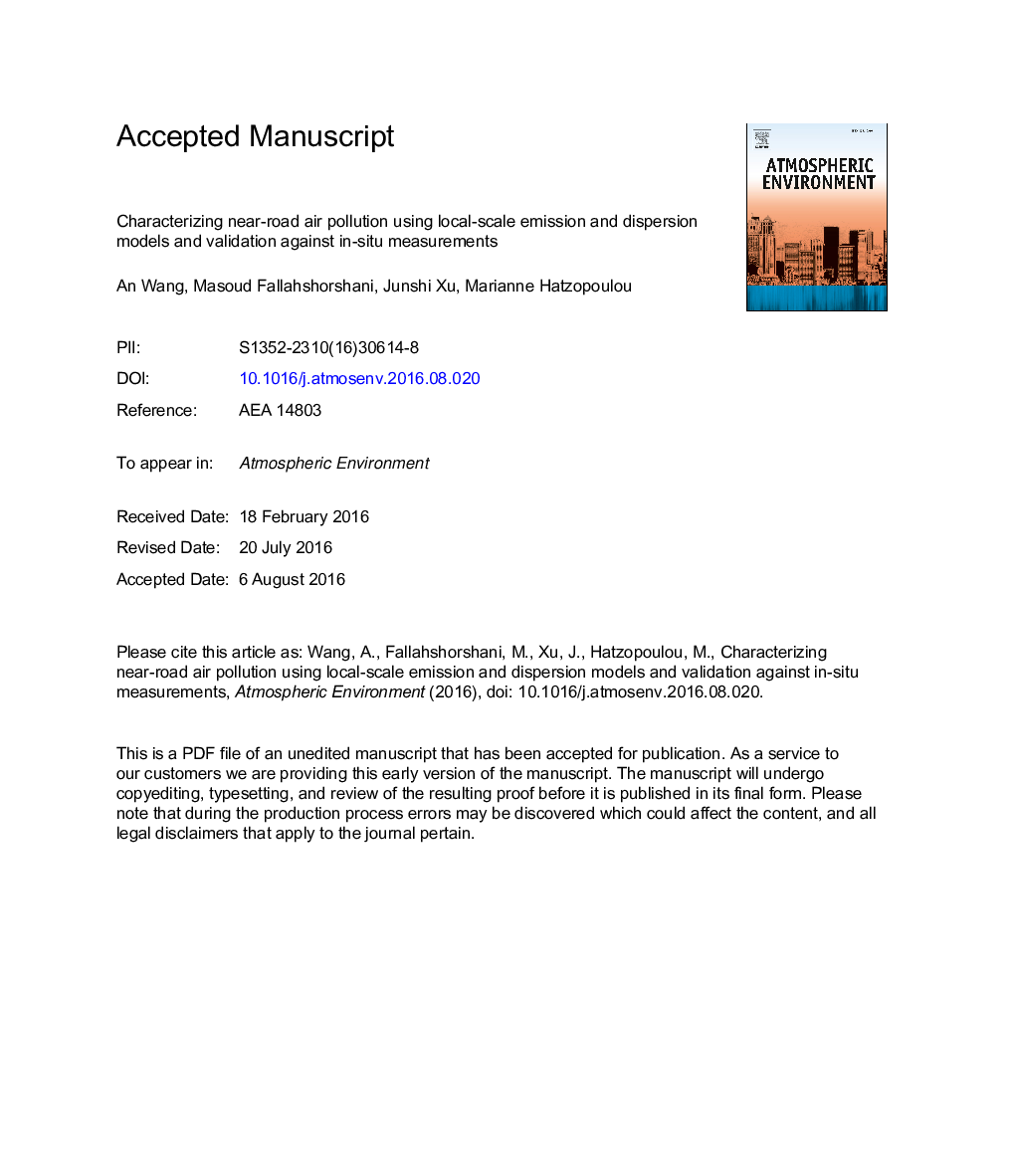| Article ID | Journal | Published Year | Pages | File Type |
|---|---|---|---|---|
| 6335799 | Atmospheric Environment | 2016 | 35 Pages |
Abstract
Near-road concentrations of nitrogen dioxide (NO2), a known marker of traffic-related air pollution, were simulated along a busy urban corridor in Montreal, Quebec using a combination of microscopic traffic simulation, instantaneous emission modeling, and air pollution dispersion. In order to calibrate and validate the model, a data collection campaign was designed. For this purpose, measurements of NO2 were conducted mid-block along four segments of the corridor throughout a four-week campaign conducted between March and April 2015. The four segments were chosen to be consecutive and yet exhibiting variability in road configuration and built environment characteristics. Roadside NO2 measurements were also paired with on-site and fixed-station meteorological data. In addition, traffic volumes, composition, and routing decisions were collected using video-cameras located at upstream and downstream intersections. Dispersion of simulated emissions was conducted for eight time slots and under a range of meteorological conditions using three different models with vastly different dispersion algorithms (OSPM, CALINE 4, and SIRANE). The three models exhibited poor correlation with near-road NO2 concentrations and were better able to simulate average concentrations occurring along the roadways rather than the range of concentrations measured under diverse meteorological and traffic conditions. As hypothesized, the model SIRANE that can handle a street canyon configuration was the most sensitive to the built environment especially to the presence of tall buildings around the road. In contrast, CALINE exhibited the lowest sensitivity to the built environment.
Related Topics
Physical Sciences and Engineering
Earth and Planetary Sciences
Atmospheric Science
Authors
An Wang, Masoud Fallah-Shorshani, Junshi Xu, Marianne Hatzopoulou,
